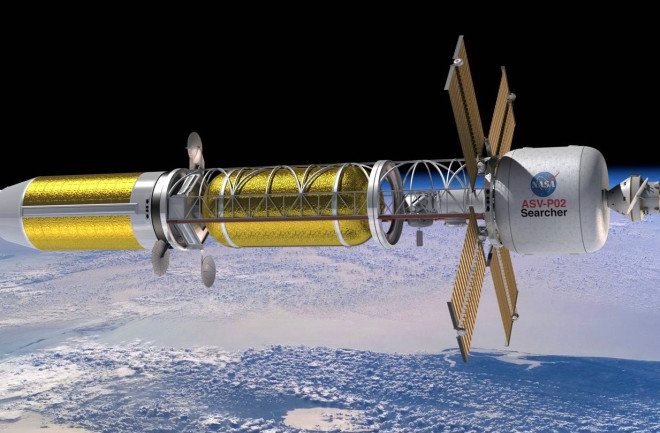The prospect of nuclear-powered rockets making the journey to Mars significantly faster has captivated scientists for years.
By utilizing energy from nuclear fission, these rockets could potentially reduce travel time to the Red Planet by half.

However, despite the allure of this groundbreaking technology, its development is far from simple.
Scientists and engineers, including NASA and the Defense Advanced Research Projects Agency (DARPA), are currently working on nuclear thermal propulsion (NTP) systems.
Unlike traditional chemical rockets that rely on chemical reactions between light propellants like hydrogen and an oxidizer to generate thrust, NTP systems use nuclear fission to heat the propellant, allowing it to be expelled at high speeds to propel the rocket.
The advantage of nuclear propulsion lies in its efficiency and power.
These systems can achieve a specific impulse, which is a measure of thrust efficiency, twice as high as that of chemical rockets, allowing for faster acceleration and reduced travel times.
However, designing NTP systems that fulfill this promise is rife with challenges.
One of the key issues in developing nuclear rockets is the fuel.
Initial NTP designs relied on highly enriched uranium, a substance now deemed too risky due to its proliferation potential—the possibility of being used for nuclear weapons.
In an effort to mitigate these concerns, the U.S. Department of Energy launched an initiative to convert highly enriched uranium into high-assay, low-enriched uranium (HALEU), which contains less fission-capable material.
However, using HALEU results in heavier rockets, as more fuel is needed to achieve the desired power.
The constraints don’t stop there.
Developing a reliable and efficient nuclear propulsion system presents complex engineering challenges.
One critical aspect is designing reactors that can withstand rapid changes in temperature and pressure, which are essential for start-up and shut-down procedures.
To complicate matters further, the U.S. has halted uranium imports from Russia, a move that adds another layer of complexity to the initiative.
DARPA’s Demonstration Rocket for Agile Cislunar Operations (DRACO) program, in partnership with companies like Lockheed Martin and BWX Technologies, aims to tackle these challenges head-on.
They’re developing reactor and fuel designs that aim to comply with rigorous performance and safety standards, with the prototype set to be tested in space by 2027.
While exciting advances are on the horizon, considerable hurdles remain.
Computational modeling to simulate the operation of Nuclear Thermal Propulsion (NTP) engines is essential for the research.
This approach assists engineers in designing systems that are both safe and efficient while minimizing the consumption of extensive computing resources.
The path to real-world nuclear-powered Mars missions, therefore, remains a complicated journey.
Yet, with continued research and innovation, these engines could one day transform space travel as we know it, opening new frontiers for human exploration in the cosmos.
